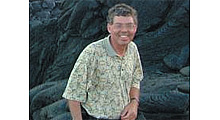Australia Begins DTV Cutover

Doug Lung
Full-power TV analog broadcasts in the United States ended more than four years ago, but many other countries have still been operating in the analog mode. One of these is Australia, but that is ending now. The ball started rolling with Sidney making the switchover on Tuesday (Dec. 3) and now only two areas in that country still have analog TV--Melbourne and remote and central eastern Australia, including areas of the Northern Territory outside of the Darwin switchover region. These remaining analog transmitters are scheduled to be switched off on Dec. 10.
For details about Australia's analog shutdown and maps, see www.digitalready.gov.au/.
As has been the case in many countries, Australian broadcasters took the opportunity to reminisce about the early days of broadcast. In a Sidney Morning Herald article, Him Hassell, CEO of Broadcast Australia, said: “It's a big day. It was just switched on in 1956 which is really only a generation.”
Bryan Eagle, a former engineer at Broadcast Australia who started with the company in 1958 was one of the first two trainees in Australia to be appointed to a TV station. He said that the Internet had made his job redundant, and described the rapid developments in technology as “frightening.”
The professional video industry's #1 source for news, trends and product and tech information. Sign up below.

Doug Lung is one of America's foremost authorities on broadcast RF technology. As vice president of Broadcast Technology for NBCUniversal Local, H. Douglas Lung leads NBC and Telemundo-owned stations’ RF and transmission affairs, including microwave, radars, satellite uplinks, and FCC technical filings. Beginning his career in 1976 at KSCI in Los Angeles, Lung has nearly 50 years of experience in broadcast television engineering. Beginning in 1985, he led the engineering department for what was to become the Telemundo network and station group, assisting in the design, construction and installation of the company’s broadcast and cable facilities. Other projects include work on the launch of Hawaii’s first UHF TV station, the rollout and testing of the ATSC mobile-handheld standard, and software development related to the incentive auction TV spectrum repack. A longtime columnist for TV Technology, Doug is also a regular contributor to IEEE Broadcast Technology. He is the recipient of the 2023 NAB Television Engineering Award. He also received a Tech Leadership Award from TV Tech publisher Future plc in 2021 and is a member of the IEEE Broadcast Technology Society and the Society of Broadcast Engineers.
